France: New Range Of Gold And Silver Proof Coins Marks Centenary Anniversary Of VIII Olympiad
New gold and silver collector coins remember the Centenary Anniversary of the 1924 Olympic Games.
Paris was chosen to host the VIII Olympiad during the International Olympic Committee’s conference in Lausanne in 1921. The French capital won their bid against the other cities of Amsterdam, Barcelona, Los Angeles, Prague, and Rome. Since the inauguration of the modern Olympics in 1896, Paris became the first city to host the Games twice having hosted in 1900. In 2024, the city of Lights will be only the second city to host the Games for a third time after London. The 1924 Olympics was personally awarded to the city of Paris by the IOC’s first President Pierre de Coubertin as one of his last acts in this capacity. He wanted to give his native country of France a chance to redeem themselves after the many difficulties of the Games hosted in Paris in 1900.
The cost of staging the Games in 1924 was estimated to have cost the city of Paris just over 10 million Francs which was equal to $668,000. The opening ceremony took place on the 5th July the Olympic Stadium of Colombes with audiences reaching over 60,000 daily until the closing ceremony on the 27th July. A total of 44 nations were represented at the 1924 Games though Germany was still absent, having not been invited by the Organizing Committee due to existing sanctions resulting from the First World War. A total of 3,089 athletes comprising 2,954 men and 135 women competed in 126 events in 23 disciplines, involving 17 sports which made up the Olympic program in 1924. The Paris Games were the first to construct a purpose-built Olympic Village to house the athletes during competition.
Of particular notoriety during the Games was the emergence of the Finnish running team who became known worldwide as the Flying Finns. Dominated by long-distance runner Paavo Nurmi (1897 – 1973) he would go on to win the gold medal in the 1500 and 5000 metres competition - which were held with only an hour between them. Nurmi would also win the gold in the cross country run with Ville Ritola (1896 – 1982) winning the 10000 and 3000 metre steeplechase.Fellow Finn Albin Stenroos (1889 – 1971) won the marathon, while Nurmi and Ritola were victorious in the 3000 metre and cross country team events.The British runners Harold Abrahams (1899 – 1978) and Eric Liddell (1902 – 1945) won the 100 and 400 metre events respectively. However, it was Liddell’s refusal to compete in the 100 metre dash because it was held on a Sunday and he was an observant Christian. Their compelling story was featured in the motion picture entitled Chariots of Fire released in 1981.
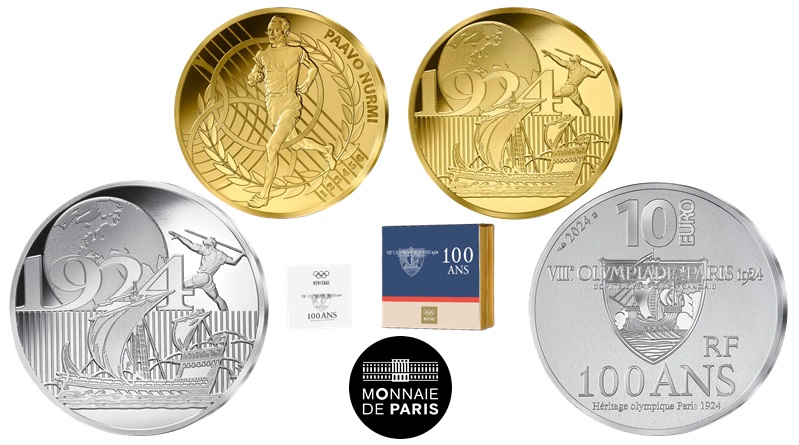
50 Euro - gold & 10 Euro - silver. The obverse design is based on an original Olympic promotional poster created by French artist Jean Droit. Featured is the emblem of the 1924 Paris Games which includes the traditional Parisian coat of arms with a single-masted ship. Above are a javelin thrower and a globe highlighting the importance of athletics during the 1924 Paris Games and pays tribute to this discipline.
50 Euro & 10 Euro - gold. The obverse depicts ‘Flying Finn’ Paavo Nurmi running on track. In the background is an athletics track to recall the discipline in which he excels and a laurel wreath which is associated with victory and glory and a portion of the familiar rings featured on the Olympic flag. To the upper right along the rim is the text PAAVO NURMI.
The reverse which is common to all coin options in this collection, features the original emblem of the 1924 Paris Games. The emblem featured the coat of arms of the city of Paris with the ancient ship which references the founding of Paris on the Ile de la Cité. The additional text 100 ANS Heritage olympique Paris 1924 remembers the centenary anniversary of the Summer Games. Above the emblem is the denomination shown with a numeral and EURO in a vertical direction. To the left of the denomination is the year of release, 2024 along the upper rim.
| Denomination | Metal | Weight | Diameter | Quality | Maximum Mintage |
| 1/4 Euro Nurmi | Copper plate | 17 g. | 34 mm. | UNC | 20,000 |
| 10 Euro | .999 Silver | 22.2 g. | 37 mm. | Proof | 10,000 |
| 10 Euro | .999 Gold | 3.1 g. | 15 mm. | Proof | 1,000 |
| 50 Euro Nurmi | .999 Gold | 7.8 g. | 22 mm. | Proof | 500 |
| 50 Euro Emblem | .999 Gold | 7.8 g. | 22 mm. | Proof | 1,500 |
Each gold and silver coin is encapsulated and presented in a custom case accompanied with a numbered certificate of authenticity. For more information, please visit the e-webshop of the Monnaie de Paris.

Download the Greysheet app for access to pricing, news, events and your subscriptions.
Subscribe Now.
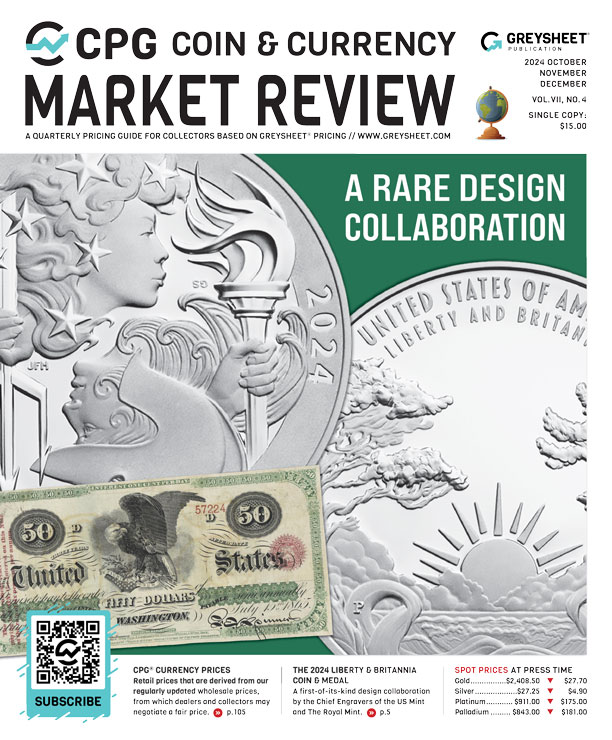
Subscribe to CPG® Coin & Currency Market Review for the industry's most respected pricing and to read more articles just like this.
Author: Michael Alexander


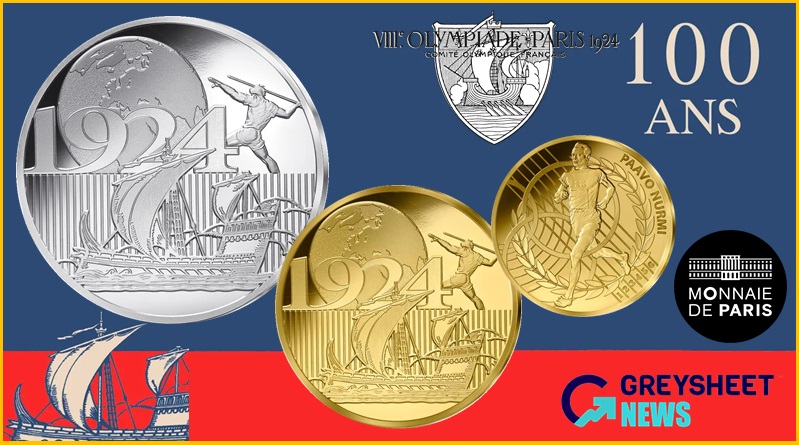






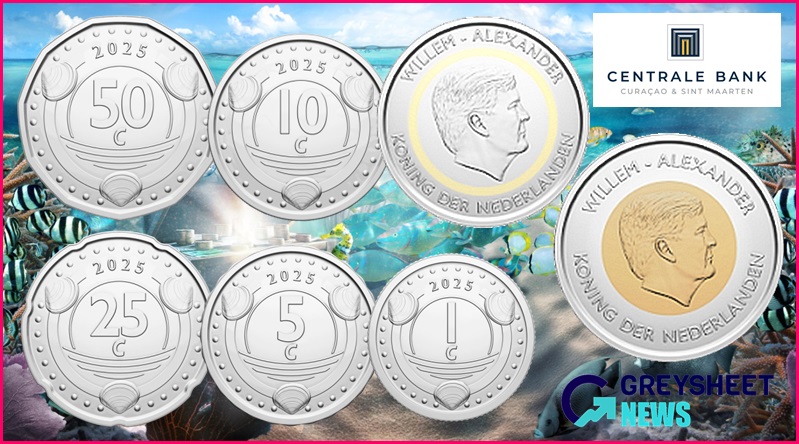
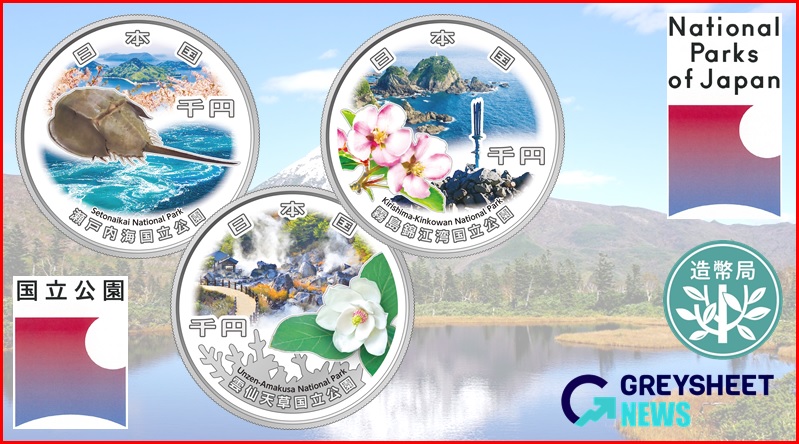
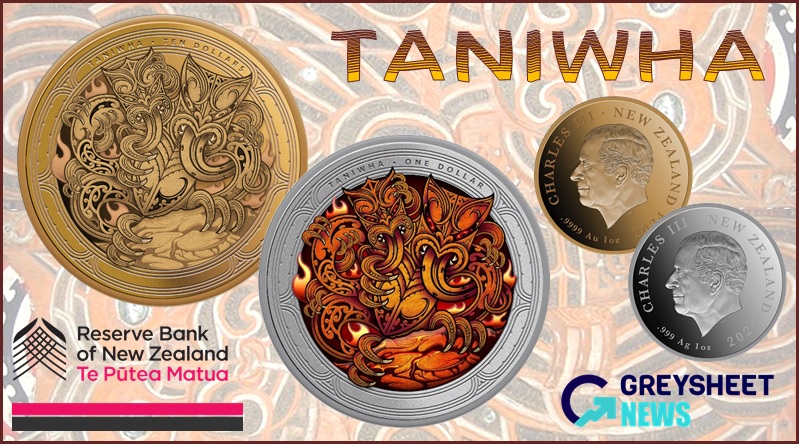
Please sign in or register to leave a comment.
Your identity will be restricted to first name/last initial, or a user ID you create.
Comment
Comments